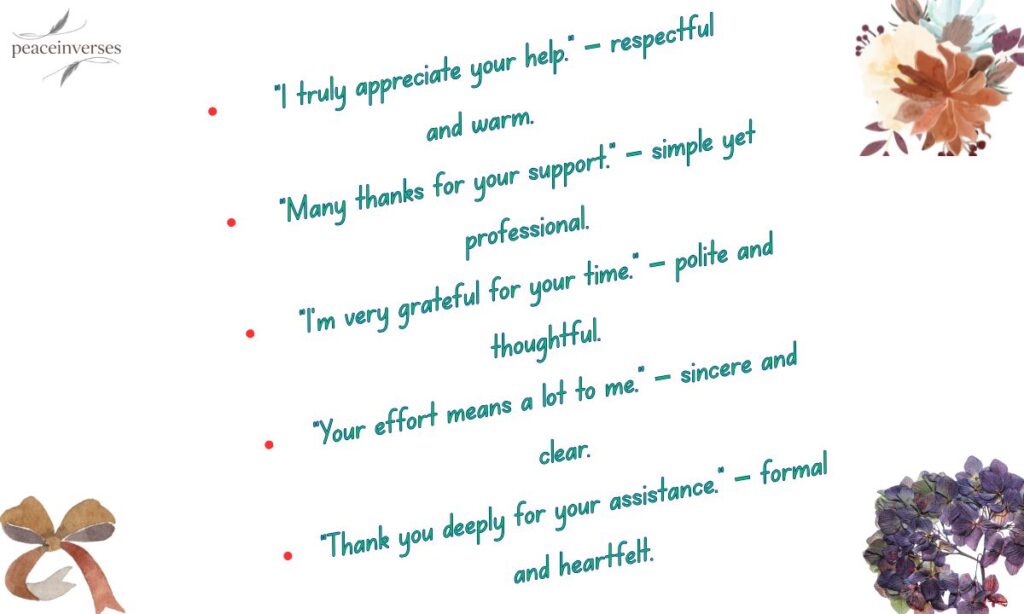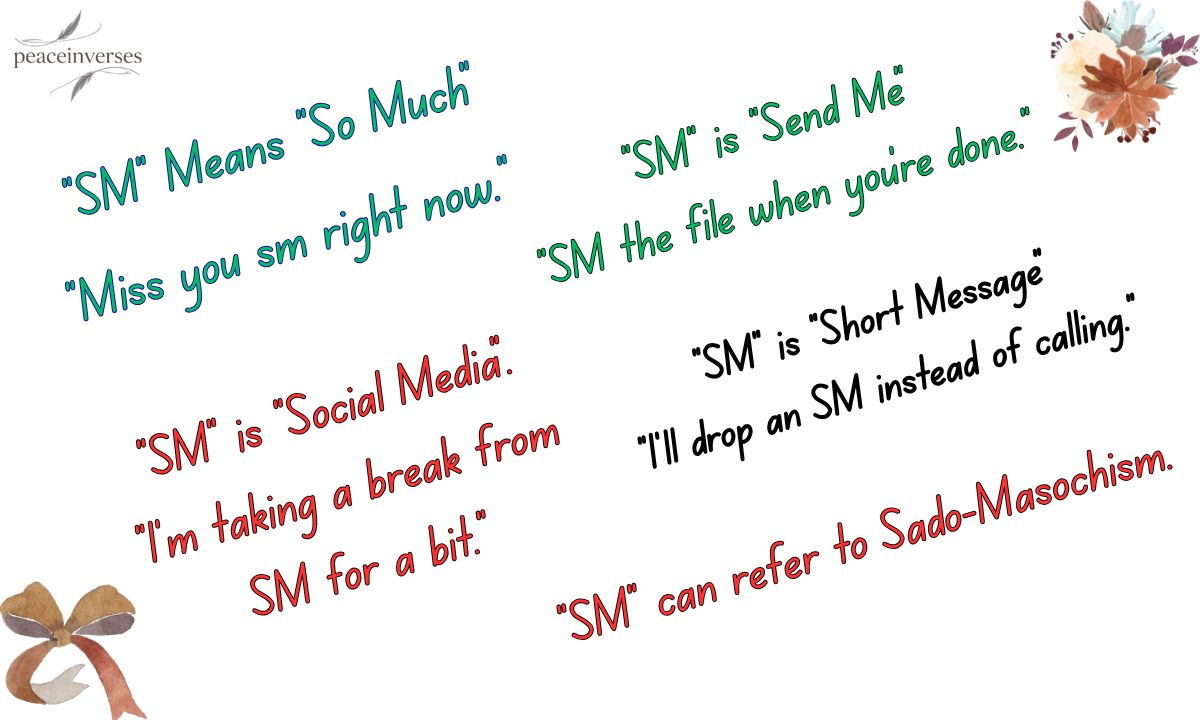Ever come across “SM” in a message and paused for a second? It’s one of those short, catchy abbreviations that everyone seems to use but rarely stops to think about. In 2025, digital chats move fast, and keeping up with these quick codes says a lot about how connected you are.
“SM” shows up everywhere—from texts to captions and comments. It’s casual, expressive, and fits right into how Gen Z and millennials talk online. If you’ve seen it pop up in your DMs lately, you’re already part of the trend shaping modern digital language.
What Does “SM” Mean in Text?
In digital chats, “SM” often slips into messages without much thought. Most people use it to save time or keep their tone casual. It’s a quick abbreviation that fits modern texting styles perfectly. You’ll often spot it in DMs, captions, or friendly comments.
However, “SM” can mean different things depending on who’s using it and where. While the most common sense is emotional, other meanings exist across platforms and communities. Understanding these differences helps you sound natural, clear, and appropriate wherever you use it.
Understanding the Nuance: When “SM” Means “So Much”
When someone types “SM”, they usually mean “So Much”. This use appears in emotional or affectionate messages. It’s short, expressive, and fits naturally in friendly or romantic chats. You might see it after words like love, thank you, or miss.
For example:
- “I love you sm ❤️”
- “Thank you sm for today!”
- “Miss you sm right now.”
This version of “SM” adds warmth to your tone. It’s simple but full of feeling. Use it with people you’re close to—friends, partners, or family. In formal chats or professional settings, it’s better to write the full phrase “so much” to avoid sounding too casual or unclear.
When “SM” Means Something Else (Contextual Meanings)
Context shapes what “SM” stands for. In other digital spaces, it can represent other phrases entirely. The same letters can shift meaning based on tone, platform, or audience. Here are the main alternate meanings you’ll come across online.
1. Social Media
One of the most common alternate meanings of “SM” is “Social Media”. You’ll often see it when people talk about platforms like Instagram, TikTok, or Facebook. It’s a convenient shorthand for creators, marketers, or anyone active online.
For instance:
- “I’m taking a break from SM for a bit.”
- “Did you see that post on SM?”
This use is neutral and clear in casual discussions. But in emails or formal writing, spell out “social media” to avoid confusion. It’s fine in group chats, social planning, or quick notes, but professionalism always benefits from clarity.
2. Send Me
Another use for “SM” is “Send Me”, which pops up in casual exchanges. It’s a short way to ask someone to send a link, picture, or file. The tone depends on how it’s written—adding “please” makes it softer.
Examples include:
- “SM the file when you’re done.”
- “SM the link pls, I can’t find it.”
This version works fine between friends or coworkers you know well. However, in formal or first-time communication, always write the full phrase “send me.” It’s more polite and avoids looking too abrupt.
3. Short Message
A less common meaning of “SM” is “Short Message”. It’s mostly used in older technical contexts or telecom discussions. You might find it in reference to SMS (Short Message Service).
Example:
- “I’ll drop an SM instead of calling.”
Although you might rarely encounter this meaning today, it’s still good to recognize. Most people now simply say “text” or “message.” If you’re not in a technical environment, skip this version entirely to stay clear and current.
4. Niche Use – Sado-Masochism
In very specific adult or kink communities, “SM” can refer to Sado-Masochism. This use is explicit and not suitable for general or public settings. It might appear in forums, adult profiles, or discussions about BDSM practices.
This meaning is niche and sensitive, so be cautious. Avoid using or referencing it outside adult spaces. If you ever come across it, make sure the context is clearly marked as mature or private. It’s important to respect consent, privacy, and boundaries in all conversations involving this term.
All Common Meanings of “SM”
| Meaning | Full Form | Typical Contexts | Tone & Use | Example | When to Use / Avoid |
| So Much | Expressing strong emotion | Texts, DMs, comments | Warm, emotional, casual | “I miss you sm ❤️” | Use with close friends or partners; avoid in formal chats |
| Social Media | Online platforms | Instagram, TikTok, work notes | Neutral, factual | “Posting this on SM later.” | Fine in casual use; spell out in emails or reports |
| Send Me | Asking to send something | Chats, group messages | Informal, quick | “SM the pic please.” | Add “please” for politeness; avoid in formal talk |
| Short Message | Technical term for text | Telecom or older usage | Outdated, formal | “Send an SM after the call.” | Rare today; use “text” instead |
| Sado-Masochism | Adult/kink term | Private or niche forums | Explicit, mature | “Into SM (consensual context)” | Avoid outside adult spaces or professional settings |
“SM” might look like just two letters, but its meaning changes fast depending on where and how it’s used. Understanding each version keeps your messages accurate, respectful, and easy to read—no confusion, no awkward tone.
Why You Should Be Careful with “SM”
The abbreviation “SM” may look harmless, but it can easily cause confusion. What one person sees as a sweet message, another might misread entirely. Age, culture, and familiarity with online slang all affect how people interpret it.
Using “SM” in the wrong place can make your message sound too casual or even inappropriate. That’s why it’s smart to consider who you’re texting and what tone fits. Always think about your audience, purpose, and platform before typing it out.
Polite & Professional Alternatives to “SM” (So Much)

Sometimes you want to express gratitude or emotion without using shorthand. Here are refined ways to say “so much” clearly while matching your tone and setting.
The right alternative keeps your message respectful and easy to read. Whether you’re chatting casually or emailing your boss, these options help you sound genuine and thoughtful.
Casual Conversation
In friendly chats, you can still show warmth and emotion while writing naturally. These options sound kind and clear without overdoing it.
Examples:
- “Thanks a ton!” – cheerful and upbeat.
- “I appreciate it so much!” – genuine and kind.
- “You’re the best, really!” – warm and lighthearted.
- “I owe you one!” – fun and casual way to show thanks.
- “Can’t thank you enough!” – full of emotion, still informal.
When should I use these?
Use them in messages to friends, peers, or anyone you have a relaxed relationship with.
Professional Settings
In business or work chats, clarity and tone matter most. Avoid abbreviations like “SM” and use complete, respectful phrasing.
Examples:
- “I truly appreciate your support.”
- “Many thanks for your assistance.”
- “Your feedback means a lot to me.”
- “I sincerely value your time.”
- “I’m grateful for your help on this project.”
Why avoid “SM” at work?
Because shorthand can look careless or unprofessional, especially in emails, LinkedIn messages, or client communication.
Emotional & Personal Conversations
When expressing love, gratitude, or deep emotion, spelling out your words feels more meaningful. It gives sincerity more weight.
Examples:
- “You mean the world to me.”
- “I’m beyond grateful for you.”
- “You’ve made such a difference in my life.”
- “I’ll never forget your kindness.”
- “I appreciate you more than words can say.”
How do I decide what to use?
If the moment feels personal or heartfelt, skip abbreviations. Full words make emotions feel real and lasting.
Online or Text Slang Equivalents
For lighter or trendier chats, these slang versions keep the casual vibe but add clarity. They fit well on TikTok, Snapchat, or Instagram DMs.
Examples:
- “TYSM” – Thank You So Much.
- “ILYSM” – I Love You So Much.
- “Much appreciated!” – simple and polite.
- “Endless thanks!” – dramatic and expressive.
- “Big thanks!” – short but friendly.
Can I mix slang and formal language?
Yes, but do it carefully. Keep slang for personal or fun conversations, and stick to full words in serious ones.
15 Perfect Reply Examples to “SM” in Text
Here are natural, ready-to-use replies for when someone texts you “SM” — whether it’s emotional, casual, or professional.
Each one helps you match tone and context, keeping your message clear and genuine.
Examples:
- “Aww, I miss you more!” ❤️
- “That means a lot, thank you.”
- “Feeling is mutual 🥹”
- “So grateful for you too!”
- “Let’s catch up soon!”
- “You’re the best, fr!”
- “Couldn’t do this without you 🙏”
- “Thank YOU for always being there.”
- “Love you to the moon and back.”
- “This made my day 🥰”
- “Always got your back!”
- “You’re amazing too!”
- “Appreciate that a lot 🙌”
- “Right back at you!”
- “You’re such a gem 💛”
How should I choose a reply?
Match their tone. If it’s emotional, respond warmly. If it’s professional, keep it polished.
When NOT to Use “SM”
Sometimes the best move is to skip the abbreviation entirely. It can look lazy, confusing, or even unprofessional in certain situations.
Avoid “SM” in:
- Work emails or official reports.
- LinkedIn posts, resumes, or client messages.
- Conversations with older relatives or those unfamiliar with slang.
- Multicultural groups where tone might be misunderstood.
What’s safer instead?
Spell out the full phrase like “so much” or use polite alternatives—clarity always wins.
Conclusion
“SM” is short but powerful. It can express affection, gratitude, or connection in just two letters. Yet, because it has multiple meanings, using it without care can easily cause confusion.
By reading your audience and choosing words that fit, you’ll always strike the right tone. Whether you’re being sweet, thankful, or professional, spelling things out shows effort—and that’s what makes any message feel genuine.

